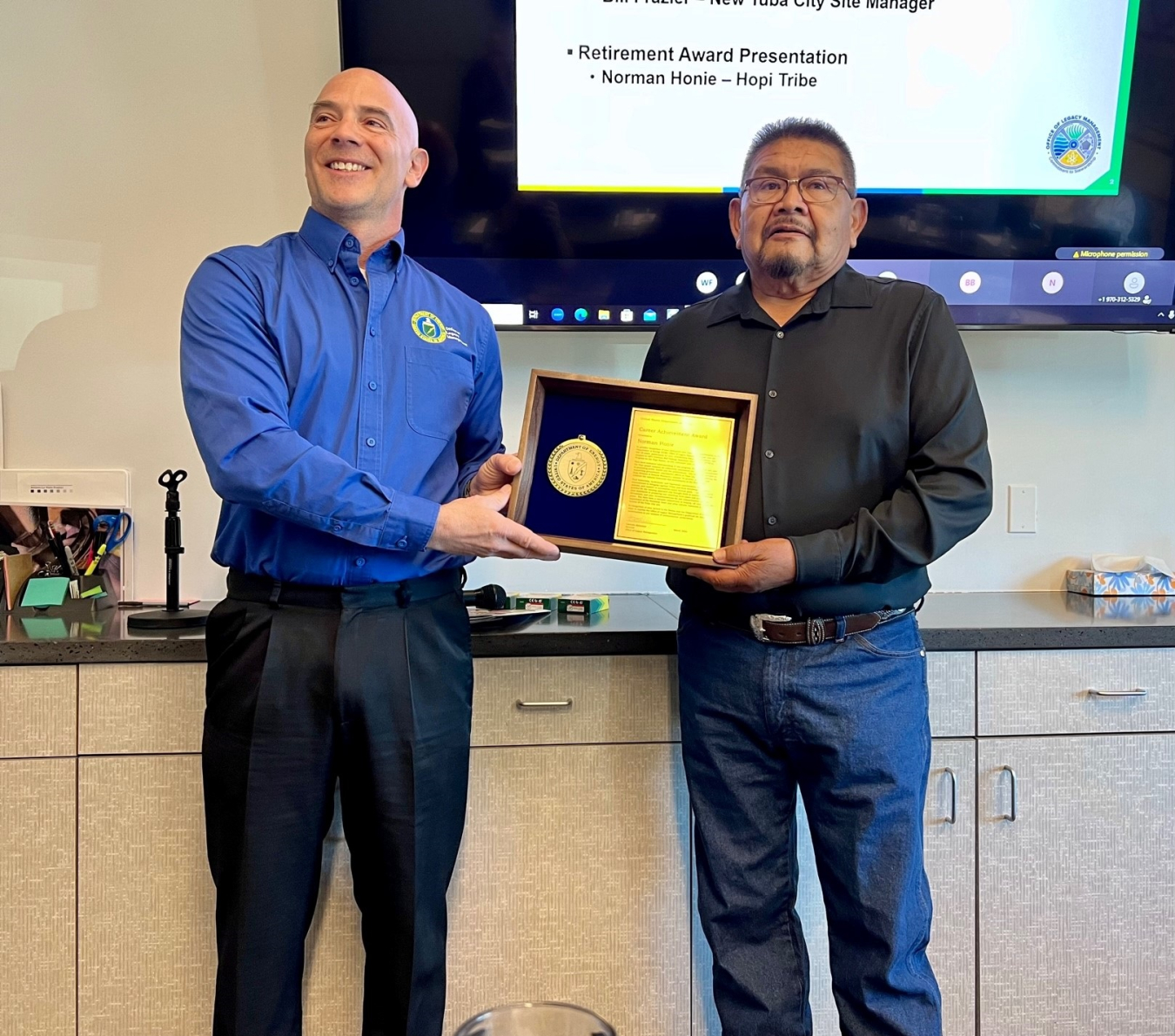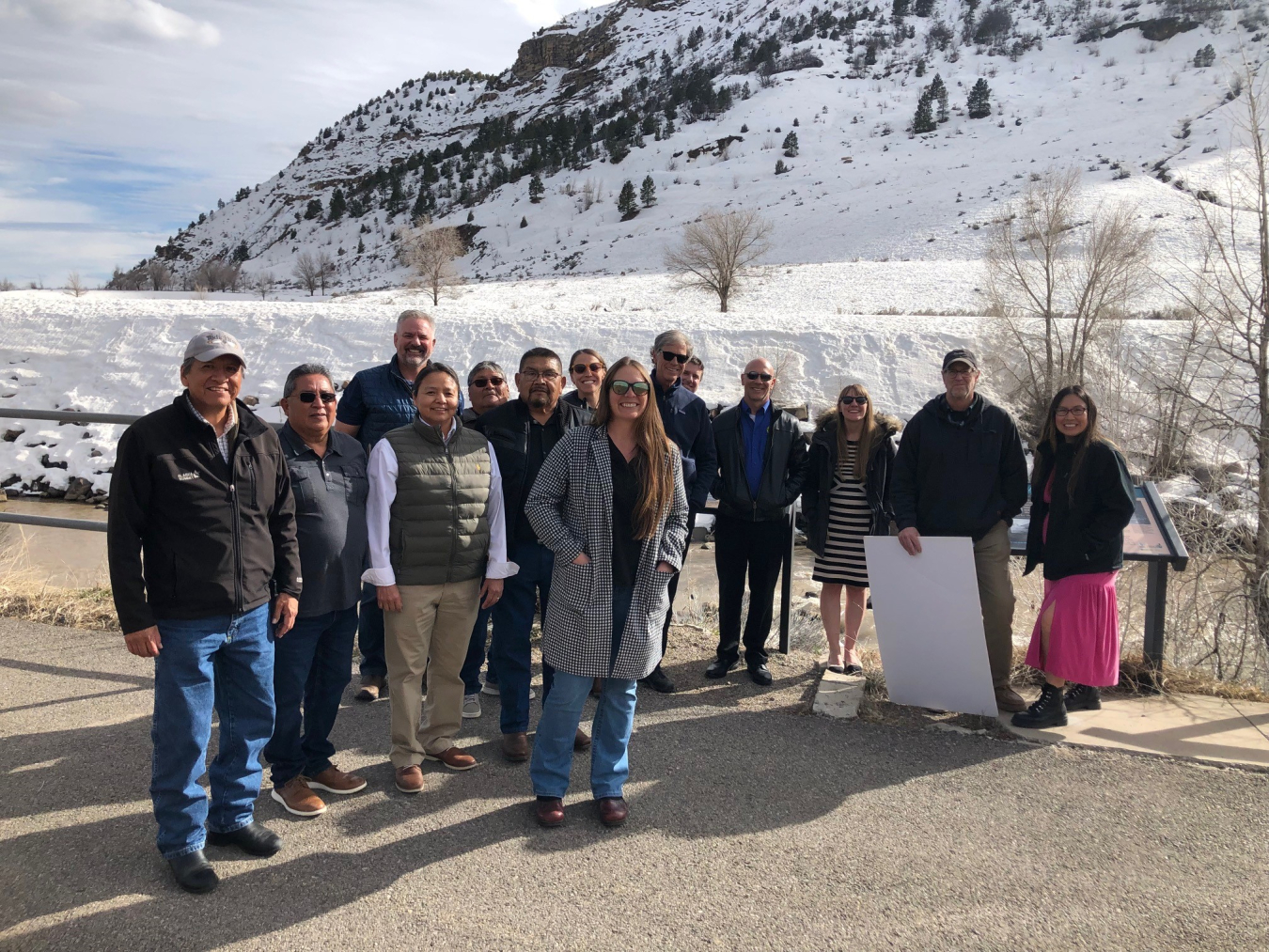Norman Honie, Jr. recognized for working with LM to protect public health and the environment at the Tuba City, Arizona, Disposal Site.
April 12, 2023LM Director Carmelo Melendez honored Norman Honie, Jr., one of LM’s longtime Hopi tribal partners, during the Navajo-Hopi-DOE triannual meeting in Durango, Colorado, on March 14.

UMTRCA Team Lead Paul Kerl presented Norman Honie, Jr. an award from LM Director Carmelo Melendez to recognize Honie’s 22 years of service to the Hopi people and support of groundwater remediation efforts at the Tuba City, Arizona, Disposal Site.
Melendez developed an award for Honie “in grateful recognition of your dedication and numerous contributions to the Department of Energy Office of Legacy Management, particularly for your outstanding leadership, guidance, and support to LM’s Uranium Mill Tailings Radiation Control Act program on the Hopi Nation.”
UMTRCA Team Lead Paul Kerl presented the plaque on behalf of Director Melendez to Honie to recognize his 22 years of service to the Hopi people and support of groundwater remediation efforts at the Tuba City, Arizona, Disposal Site.
Honie is a member of the Cloud Clan from the Village of Tewa. He is the former program manager for the Hopi Tribe Department of Natural Resources Mining and Mineral Resources Program. Melendez said Honie’s keen technical understanding of UMTRCA, the Tuba City site, and the Hopi people ensured a mutual commitment to protecting public health and the environment.
“Your leadership and tactful and diplomatic contributions were instrumental in bringing together Tribal and local knowledge, guidance, policies, and support to accomplish many mutual goals,” Melendez wrote to Honie. “You have also been a valuable collaborator to understanding the importance of Moenkopi Wash and other natural resources in the vicinity of the site.”
During his career, Honie focused on active remediation to clean contaminated groundwater at the former uranium processing site east of the Hopi Moenkopi Villages and Tuba City in northeastern Arizona.
“The Navajo Aquifer is a high-quality water resource with significant cultural, religious, and traditional values to Hopi and Navajo tribal members,” Honie said. “The aquifer should be protected from contamination at all costs to prevent life-threatening health effects to the public and all living things that depend on it for survival.”

Navajo-Hopi-DOE triannual meeting attendees toured Animas City Park in Durango, Colorado.
Representatives from the Navajo Abandoned Mine Lands Reclamation Program, Hopi Department of Natural Resources, DOE, and DOE contractors meet three times a year at different locations on and off the Navajo Nation. They held the first 2023 triannual meeting in Durango, Colorado, which is the site of a former uranium mill and nearby disposal cell. At a typical triannual meeting, representatives share presentations about ongoing work at four former uranium-processing sites on the Navajo Nation, followed by technical discussions.
In Durango, LM Defense-Related Uranium Mines team members updated meeting participants about DRUM work on the Navajo Nation. DRUM teams safeguard abandoned uranium mines on tribal lands to protect human health and the environment. March meeting attendees learned about Durango’s processing site cleanup and contaminated materials placement in a nearby, protected disposal cell.
The group also toured Animas City Park, which was developed by the city of Durango after the mill site was closed, remediated, and returned to the city for unrestricted public use.

